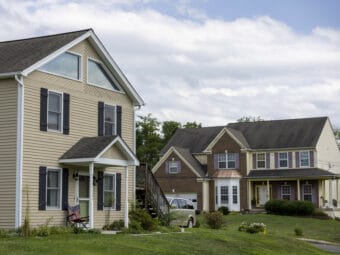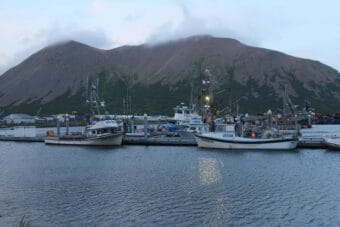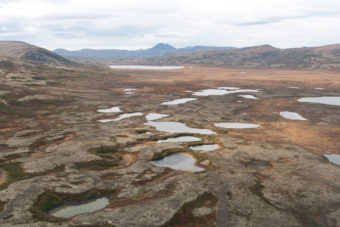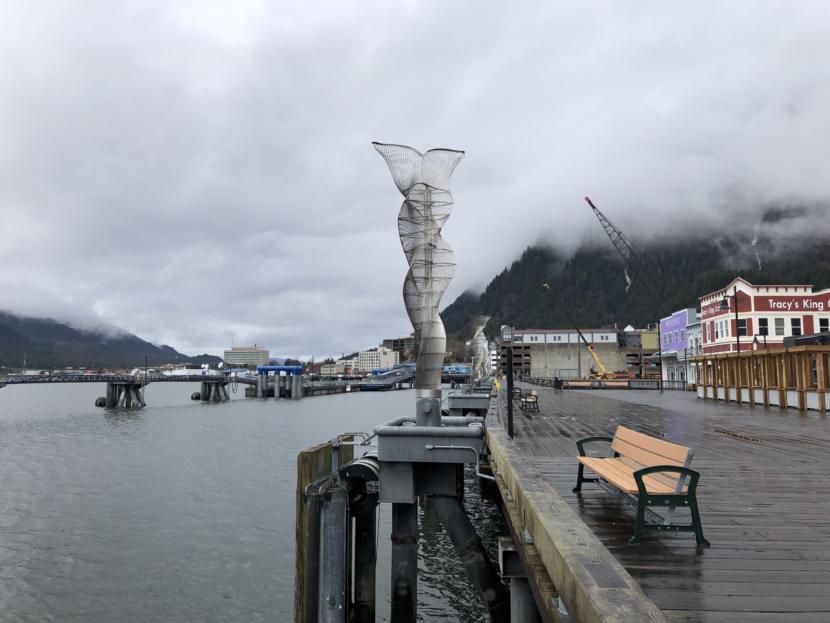
Southeast Alaska faced double-digit job losses between 2019 and 2020. But the impact wasn’t uniform across the region. Some cities lost as many as 4 in 5 hotel, tour and restaurant jobs.
Ketchikan lost nearly 1 in 4 jobs between June 2019 and June 2020. In Haines, the numbers were even more grim: a 37% decline over 12 months.
University of Alaska Anchorage economics professor Mouhcine Guettabi shared the striking numbers on Monday on Twitter. He says that while the state has faced headwinds before, 2020’s losses defy comparison.
“Relative to other periods of decline, this still dwarfs anything that we’ve ever seen, at least in the last 18 or 19 years,” Guettabi said in a phone interview Wednesday.
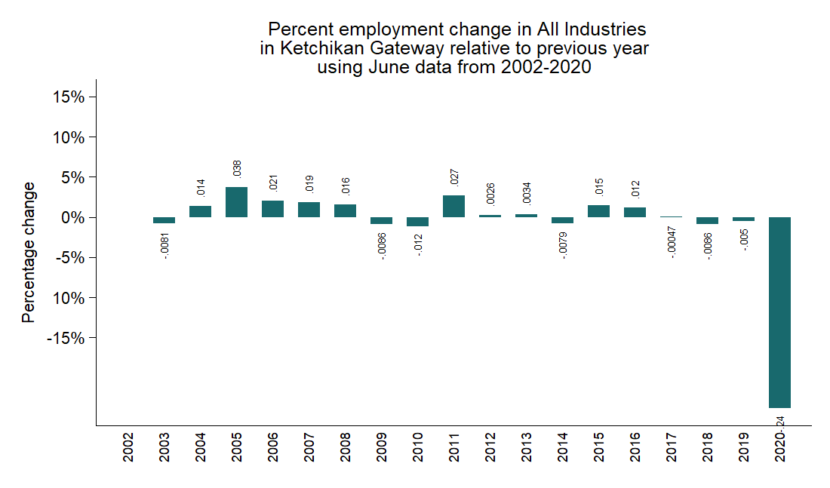
Even before the coronavirus vaporized the cruise season, job gains were lagging. Guettabi says Ketchikan hasn’t seen positive job growth creep above 2% for nearly a decade.
“When you look at that growth in the years before, you don’t see multi-year growth of 2 or 3 or 4%, like what the national economy was doing, you see fairly modest growth,” he said. “So we’re getting this massive shock at the heels of fairly modest growth, even decline in some places.”
The Anchorage-based economist says the largest losses have been in leisure and hospitality, along with the retail sector.
State data show that Ketchikan lost half its jobs in restaurants, tourist attractions and hotels. Skagway lost a staggering 83% of its leisure and hospitality jobs — from 592 in June 2019 to a mere 99 a year later.
Guettabi says the job numbers raise important questions for lawmakers and local and state officials as they consider how to respond.
“One of the things that I’ve been very concerned about is business failure, or how many businesses are permanently shut down as a result of this,” he said.
He says he’s also concerned about long-term unemployment — generally, the longer a worker goes without a job, the harder it is for them to reenter the workforce. But he says the data also raise longer-term questions, like whether lawmakers should do as Gov. Dunleavy proposes: draw heavily on the Alaska Permanent Fund for relief.
“And if we do that, what is the most effective way of allocating those dollars?” Guettabi said. “Should they go to businesses? Should they go to people? Should they go to local government? Is it a specific amount to every community? Do you give sectors that are most affected more money?”
It’s not clear from the data how many of the jobs that were lost would have gone to locals. Tourism businesses often look Outside to fill seasonal jobs. Guettabi acknowledges that could blunt the local impact. But seasonal workers still contribute to the local economy.
“Nonresident wages, nonresident spending, much of it ends up going in the pockets of businesses that are owned by a resident and who then employ residents, so that chain is affected,” he said.
Guettabi says the fact that the pandemic has devastated the economy of towns that depend on tourism is well-known. But he says the borough-by-borough numbers show just how severe the impact has been in each community.
Data for the third quarter of 2020 is due out later this month.

